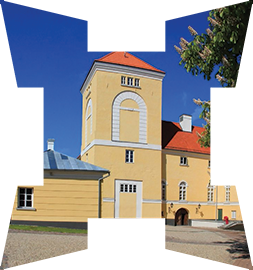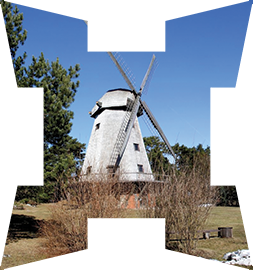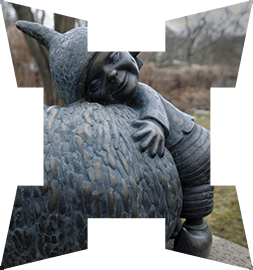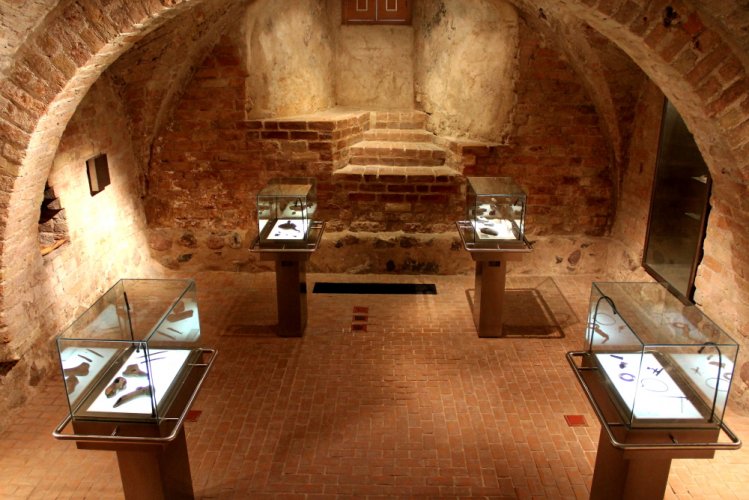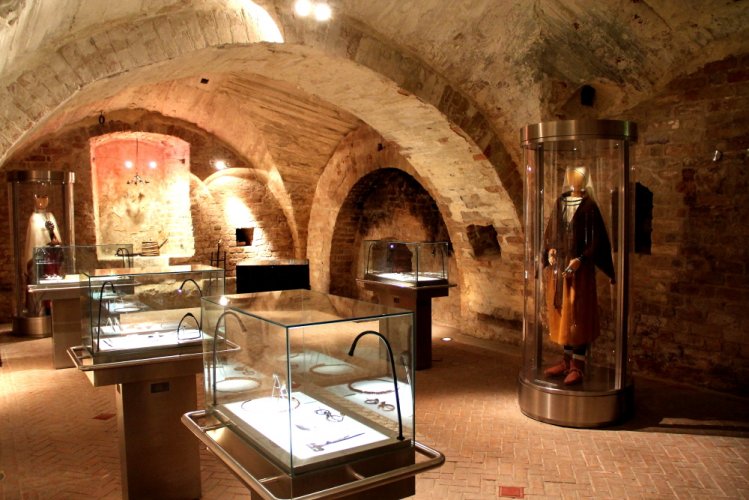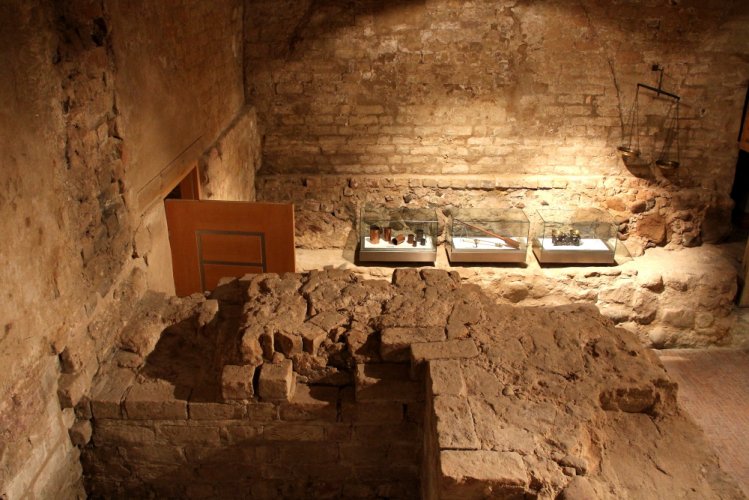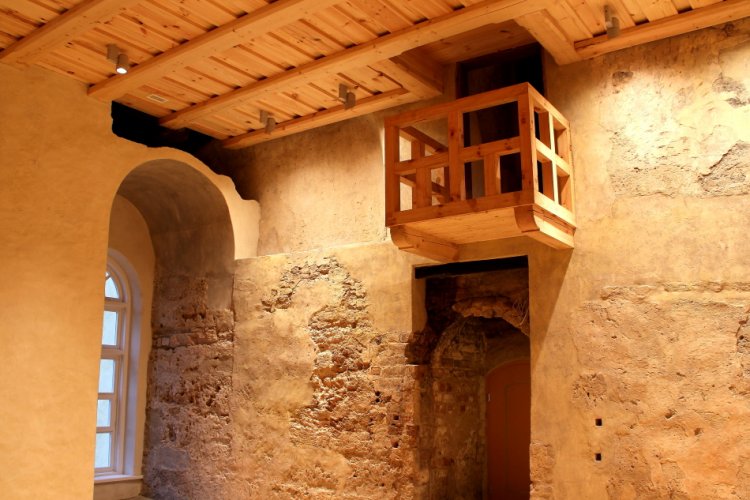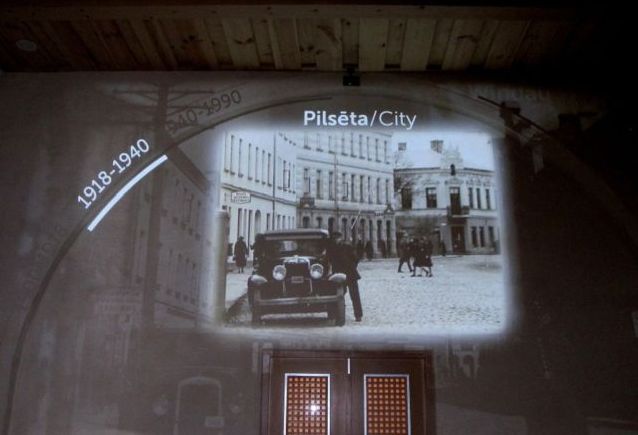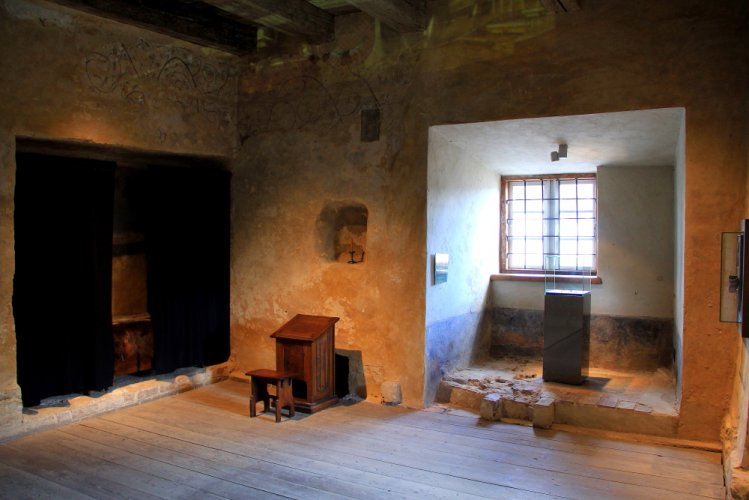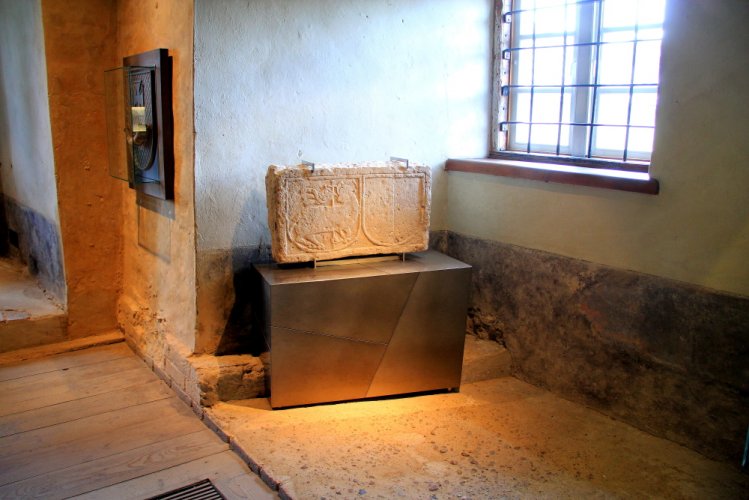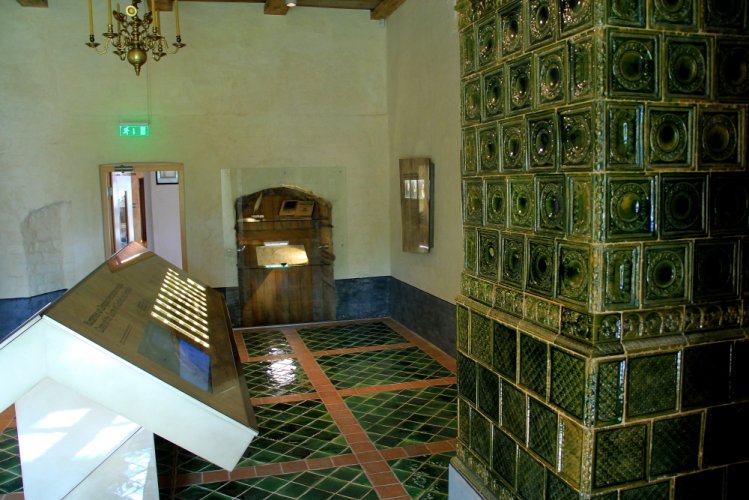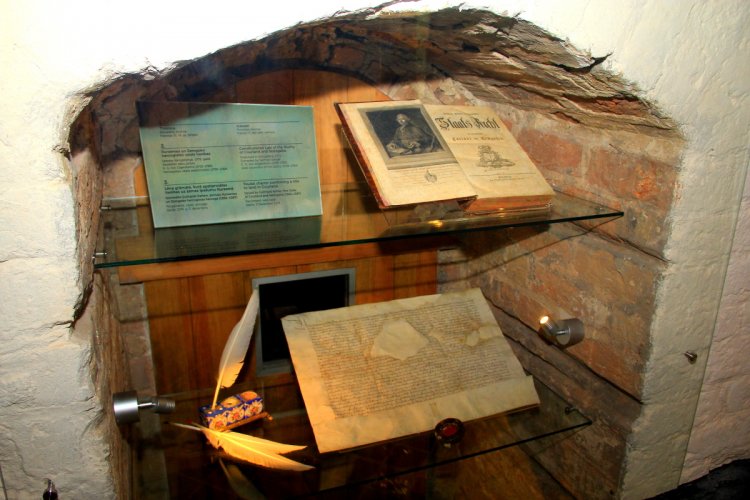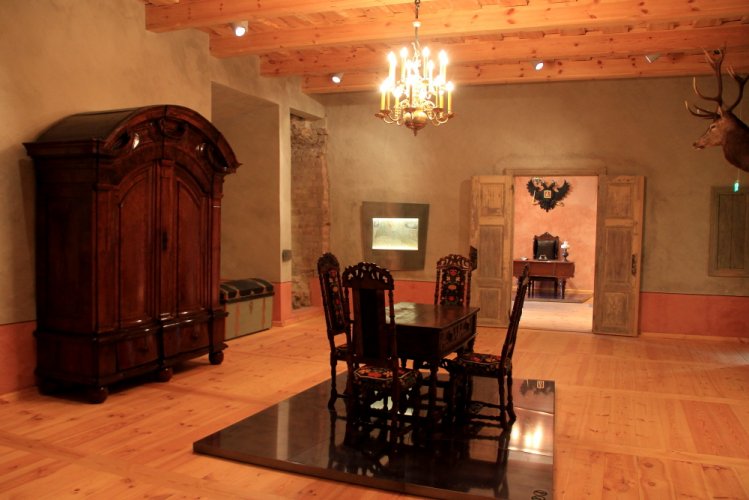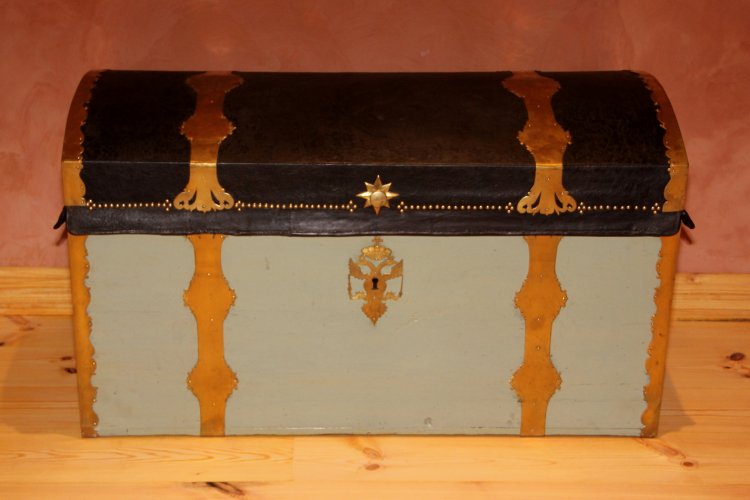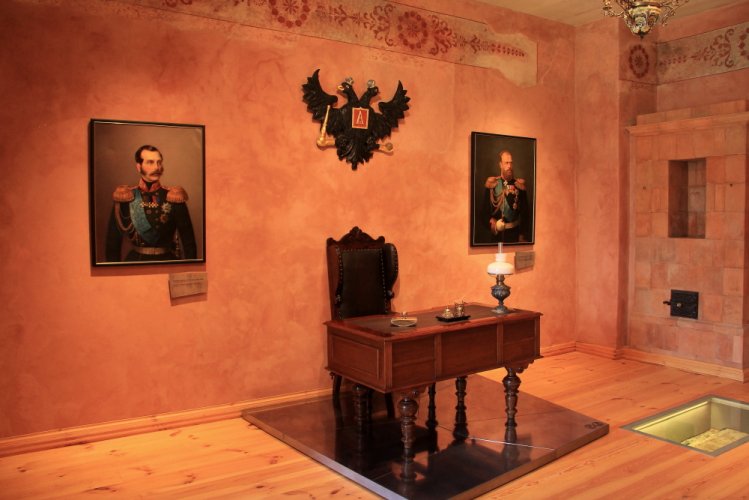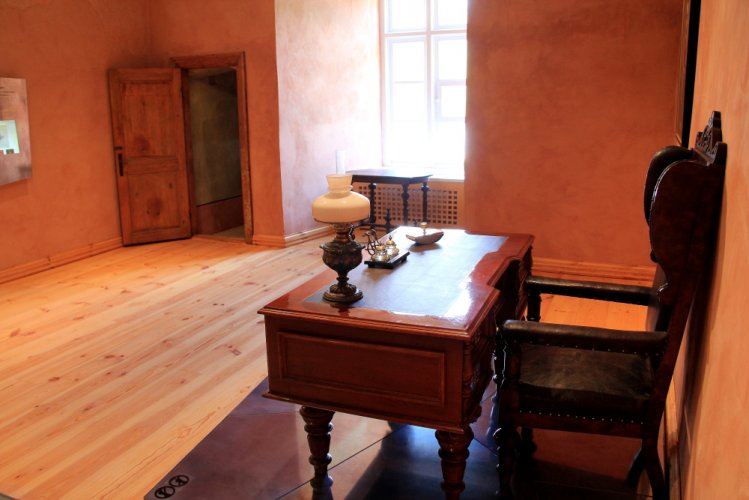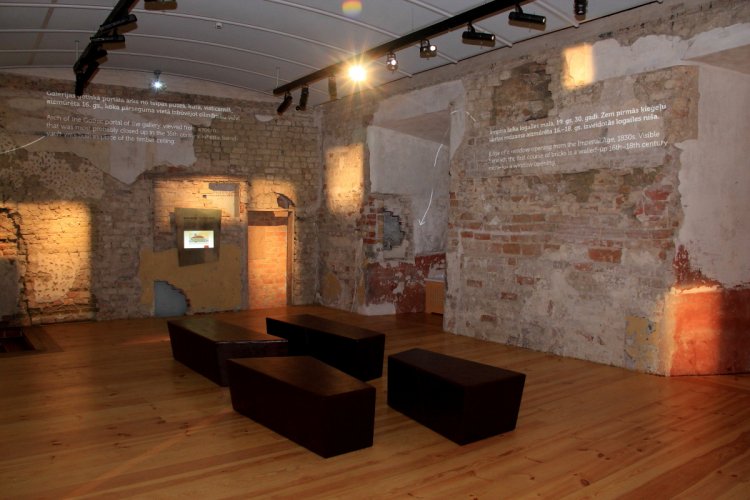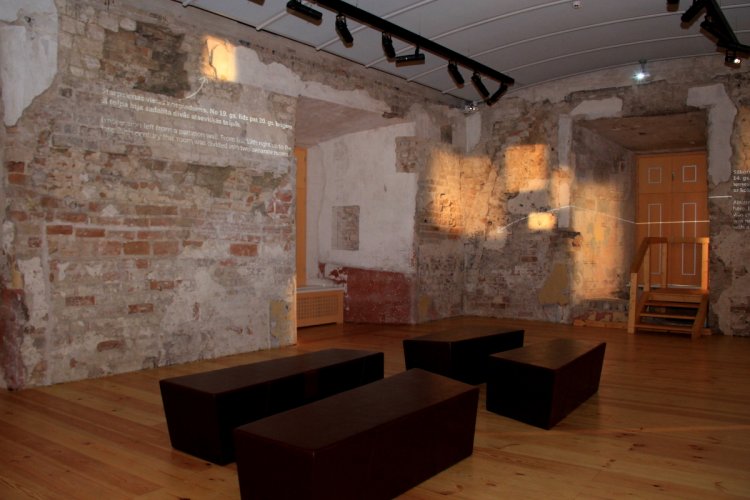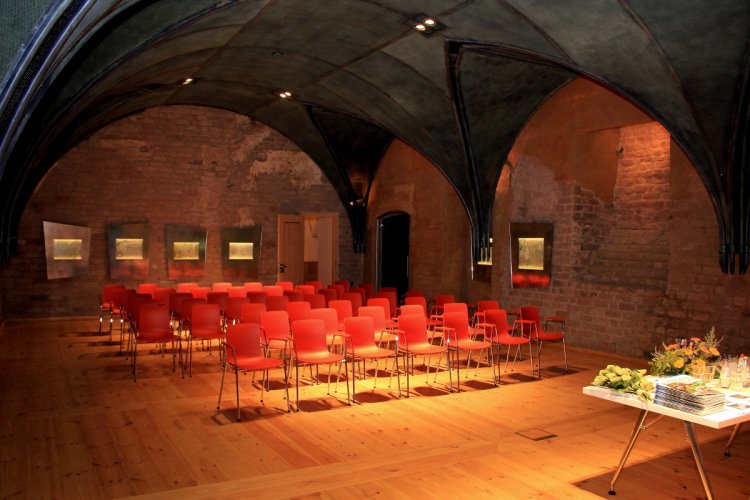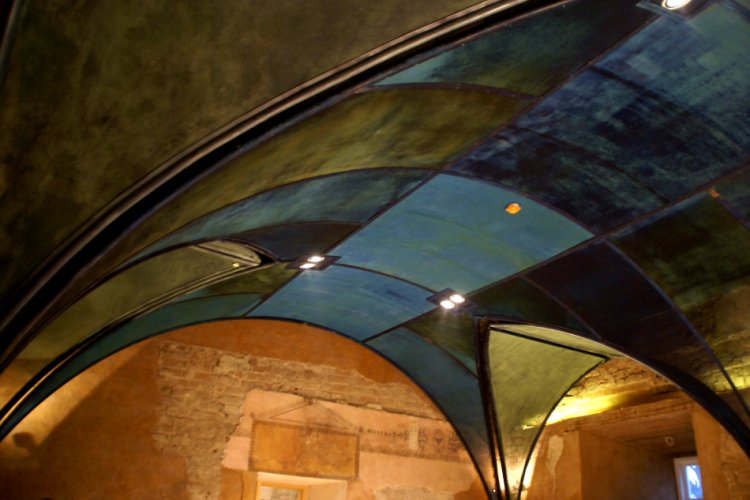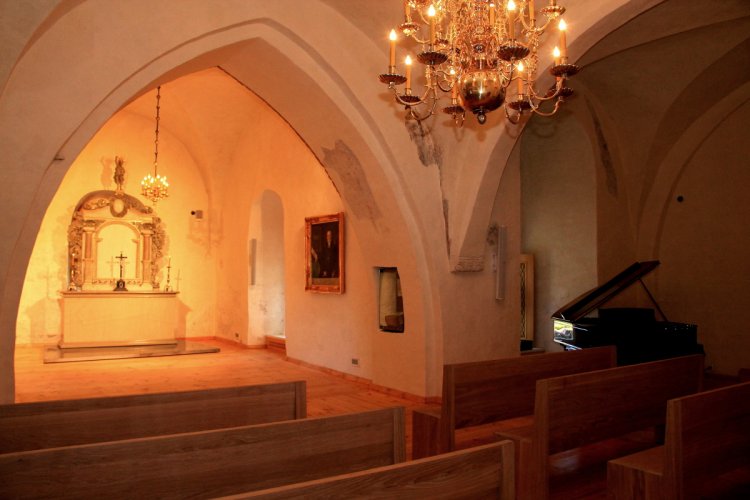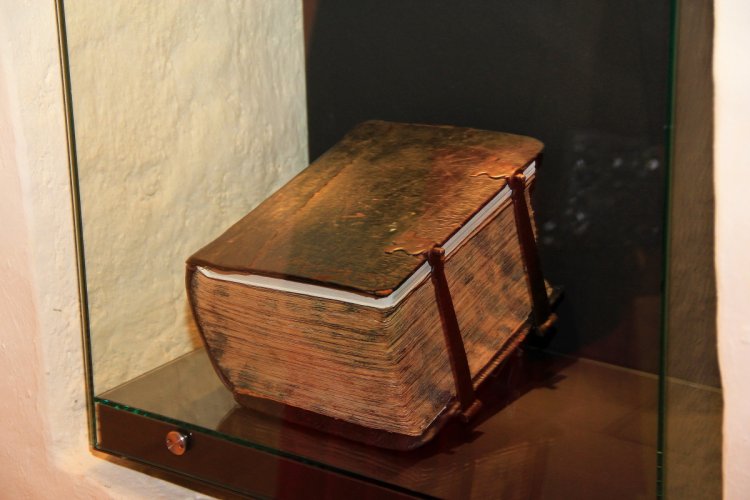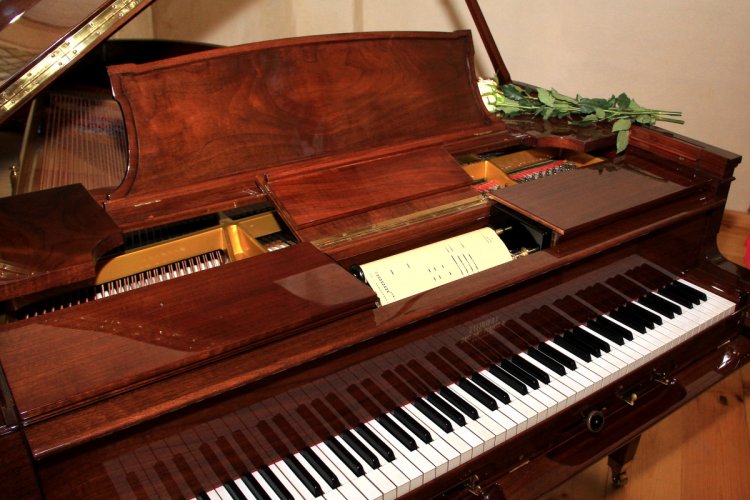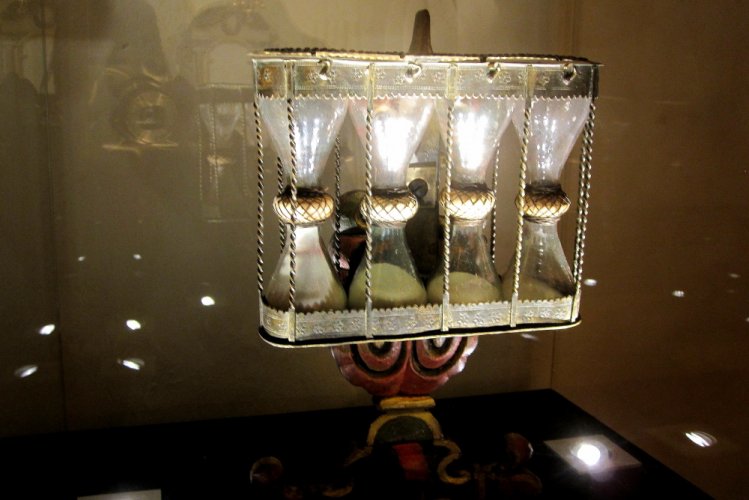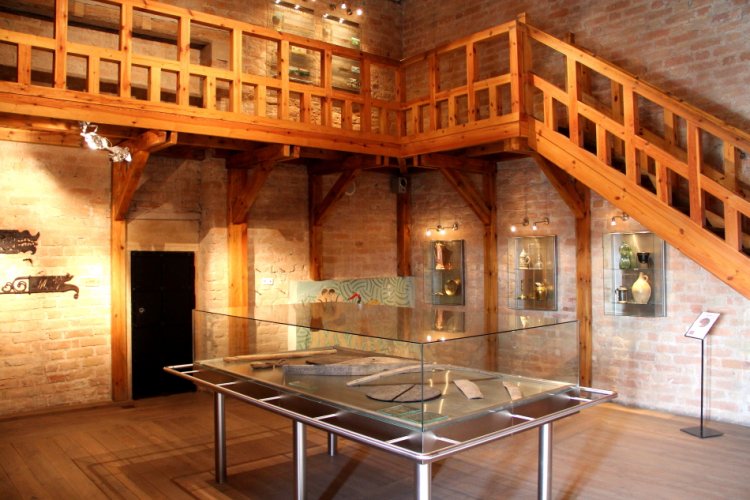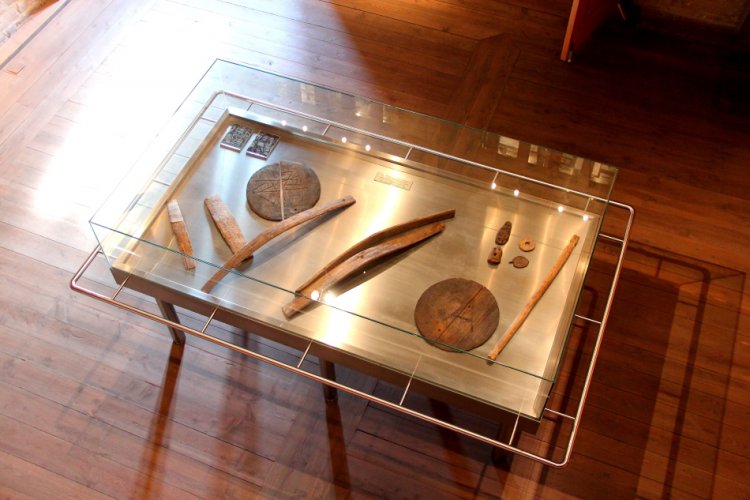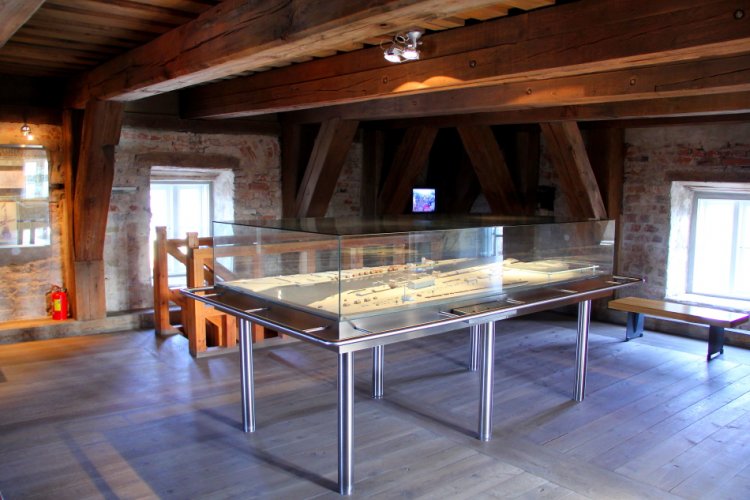Collections
Ventspils Museum’s permanent exhibition in the Castle of the Livonian Order can be regarded as consisting of two separate parts-the digital exhibition Living history, and the exhibition arranged in the rooms of the castle, begun in 1999. The concept behind the exhibition was created by Dr. hist. A. Radiņš, and the museum staff took an active part in augmenting and detailing it in 1999-2002. In 2000-2002 the artistic design of the first part of the exhibition was undertaken by the Support Foundation of the Jānis Rozentāls Riga Art School. The digital exhibition was created according to a commission from Ventspils Museum by the Digitālā darbnīca company.
The concept behind the permanent exhibition includes several basic principles that apply to the structure of the existing exhibition and the parts still to be created:
- the exhibition maximally respects the castle as an architectural feature to be exhibited;
- the chronological limits of the exhibition on the history of the region and the town are: 8th mill. BC to the turn of the 20th century;
- the exhibition is created as an attraction involving the items to be exhibited, as well as models and audiovisual information;
- in parallel with the traditional way of presenting the museum artefacts and information, widespread use is to be made of modern information technology;
- the exhibition forms an organic part of other activities and functions to be developed in the castle-the conference hall, concert hall and children’s activity areas.
The theme of the main exhibition is the history of Ventspils region, the city and the port.
Particular rooms in the castle house, or are planned to house, exhibitions on the following themes:
- Prehistory of the Ventspils region.
- Material culture of the Couronians, Livs and Latvians in the Ventspils region in the 13th-19th century.
- Ventspils as a town of craft-workers and traders in the 14th-19th century
- Life in the castle under the Livonian Order.*
- The Ventspils woodcarvers in the second half of the 17th and the early 18th century.*
- Life in the castle under the Duchy of Courland and Semigallia.*
- Life on estates in the Ventspils region and the lifestyle of the landowners in the 16th-19th century.*
- Life in the castle in the 19th century.*
- The history of Ventspils Castle.
- The history of the city of Ventspils.
- The port of Ventspils through time.
* parts of the exhibition still to be created
The permanent exhibition is located on the first and second floor of the castle, in the castle tower and in the prison building in the outer yard.
Room 110.
Prehistory of the Ventspils region. The exhibition tells of the earliest history of the region, from the arrival of the first inhabitants, the Stone Age communities of hunters, fishers and gatherers, up to the farmers and stock-keepers of the Iron Age. In chronological terms, the exhibition covers the period from the 8th mill. BC up to the early 13th century AD. The exhibits are stray finds from the collections of Ventspils Museum and the Latvian History Museum.
Room 111.
Room 112.
Room 201.
Room 202.
Room 205.
Life in the castle under the Duchy of Courland and Semigallia. A display of interiors intended to give an impression of life in the castle in the 17th-18th century.
Room 206.
Life on estates in the Ventspils region and the lifestyle of the estate-owners in the 16th-19th century. Displaying objects and furniture connected with life on the estates in the 16th-19th century.
Room 207.
Life in the castle in the 19th century. Displaying objects and furniture characterising the way of life of officials of the central authorities during the time when Ventspils was under the rule of the Russian Empire.
Room 208.
The so-called Burgomaster’s Room, where items will be displayed relating to the heads of the city administration and their lifestyle.
209. telpa
Kapitula zāle. 16.-18. gs. karšu ekspozīcija. Tajās attēlota Kurzeme, Ventspils dažādos laika posmos. Daļa karšu iegādātas dažādu Rietumeiropas valstu antikvariātos.
210. telpa
Pils kapela. Ekspozīcijā skatāmi Sefrensu dzimtas u.c. koktēlnieku darbi.
Room 301.
The display The Castle of the Livonian Order in Ventspils tells the history of the oldest building in Ventspils, connected with the origins of the town and also the present museum building. On display are the artefacts recovered in archaeological excavation-coins, cannonballs, pottery vessels and other items relating to military activity and the everyday life of the castle’s inhabitants, as well as the most interesting structural elements (bricks, stove tiles, roof tiles). At the centre of the display is a model showing the castle as it was in the 16th century.
Room 401.
The display The city of Ventspils tells the history of the city through material evidence of its past-structural elements and everyday items, and shows the city’s development as seen in historic maps. Interesting artefacts found in excavations over the past decades are displayed, including a 15th century wooden door. A display of old postcards gives the visitor a feel for the milieu of the town in the late 19th and early 20th century.
Room 501.
The exhibition on the top floor of the castle tower is devoted to the history of the port of Ventspils. There is a model of the port as it was at the beginning of the 20th century, models of ships that arrived in the port of Ventspils at various times in history, maps and a compass. The visitor can also view the port, the ships and the city at the present day with the help of modern computer-guided technology.
The prison in the castle
An exhibition about a period in the history of the former castle of the Livonian Order from 1832 until 1959, when it served as a prison. In the building constructed in the 19th century to house the prison administration and in the solitary cells the visitor can see the interior of the cells and objects connected with the everyday life of the prisoners.
Archaeological collection
Many artefacts come from burial sites destroyed by farming. Over the past decade, the collection has been significantly augmented with material from excavations in Ventspils and the region (Ance ancient cemetery in 1991-1992, Popes Lazdas Couronian cremation cemetery in 1999, excavations in Ventspils at Kuģinieku iela, Skolas iela, the Market Square and the Castle of the Livonian Order in the 1980s). The artefacts in the collection reflect the material culture of the people living in the town and the region, from the Stone Age up to the Late Middle Ages.
The richest part of the collection consists of ornaments: brooches, armbands, neck-rings, pendants, finger-rings, dress-pins etc. The collection also includes weaponry: axes, spears and swords, as well as horse-trappings, tools and other archaeological material.
Collection of documents
The oldest original documents in the collection date from the 18th century: the archives of the churches of Ugāle, Landze, Piltene, Puze and Zlēkas, commands issued by the rulers of the Russian Empire and various authorities, and also the archive of Ēdole Parish Board. A large part of the collection consists of the personal archives of prominent individuals of Ventspils and the region.
Collection of published works
The oldest works in the collection are religious books published in the early 17th century (including the so-called Glück Bible). A large part consists of teaching literature and periodicals published in various periods. An important part of the collection consists of books, calendars and press published in Ventspils, and works by authors from Ventspils and the region.
Ethnographic collection
The items in the collection have mainly been obtained in the course of fieldwork organised by the museum in the villages of Ventspils District. It reflects the material culture and everyday life of the population from the 19th century onwards. A rich part of the collection consists of items relating to flax processing, and everyday utensils. The most elaborate item is the Ventspils regional costume.
Collection of postcards and photographs
The rich collection of postcards provides an impression of the city, its development and changes in its appearance over time. It has been brought together from private collections and separate donations. The most important part of the collection consists of postcards printed in the early 20th century-in the 1920s and 30s. The collection includes a rarity: several daguerreotypes.
Art collection
The collection consists mainly of works by Ventspils artists, and many of the paintings show views of Ventspils. The collection is characterised by a diversity of genres and styles. The most important part of the collection consists of work by Jānis Tīdemanis. There is also quite a large collection of work by Kārlis Danne and works by Jānis Straume. Unusual are the so-called ‘na?ve paintings’. In recent years the collection has been augmented with works by teachers of the Latvian Academy of Art from plein aire sessions in Ventspils.

